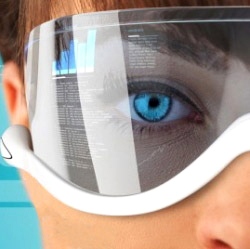
Researchers from the Center for Research and Advanced Studies in Mexico have developed a pair of glasses that use a combination of ultrasound, GPS, stereoscopic vision and artificial intelligence to help the visually impaired to navigate their environment.
The device, perhaps the most sophisticated of its kind, is slated to reach mass production early next year and will likely cost up to US$1,500. Over the past few years we’ve covered several devices for the blind and visually impaired, ranging from wrist-mounted sonars to guide vests with helmet-mounted cameras. As electronics keep getting much smaller, faster and less power-hungry, these devices can now start providing better guidance to their users, while becoming less intrusive and more affordable.
Building on previous work in stereoscopic vision algorithms for robots, a research group headed by Prof. Bayro Corrochano has built what is perhaps the most advanced system of its kind to date. The device consists of a pair of glasses with two cameras mounted on the frame, for effective stereoscopic vision. The glasses work in tandem with a tablet device that processes the data and then provides audible directions to the user.
The ultrasound technology embedded in the glasses can detect nearby static and moving objects, including translucent objects like glass. The device can also use AI to recognize locations, read signs, and identify objects such as various banknote denominations and color of clothing. Finally, included GPS can provide audible directions. The battery lasts for approximately four hours of continuous use.
